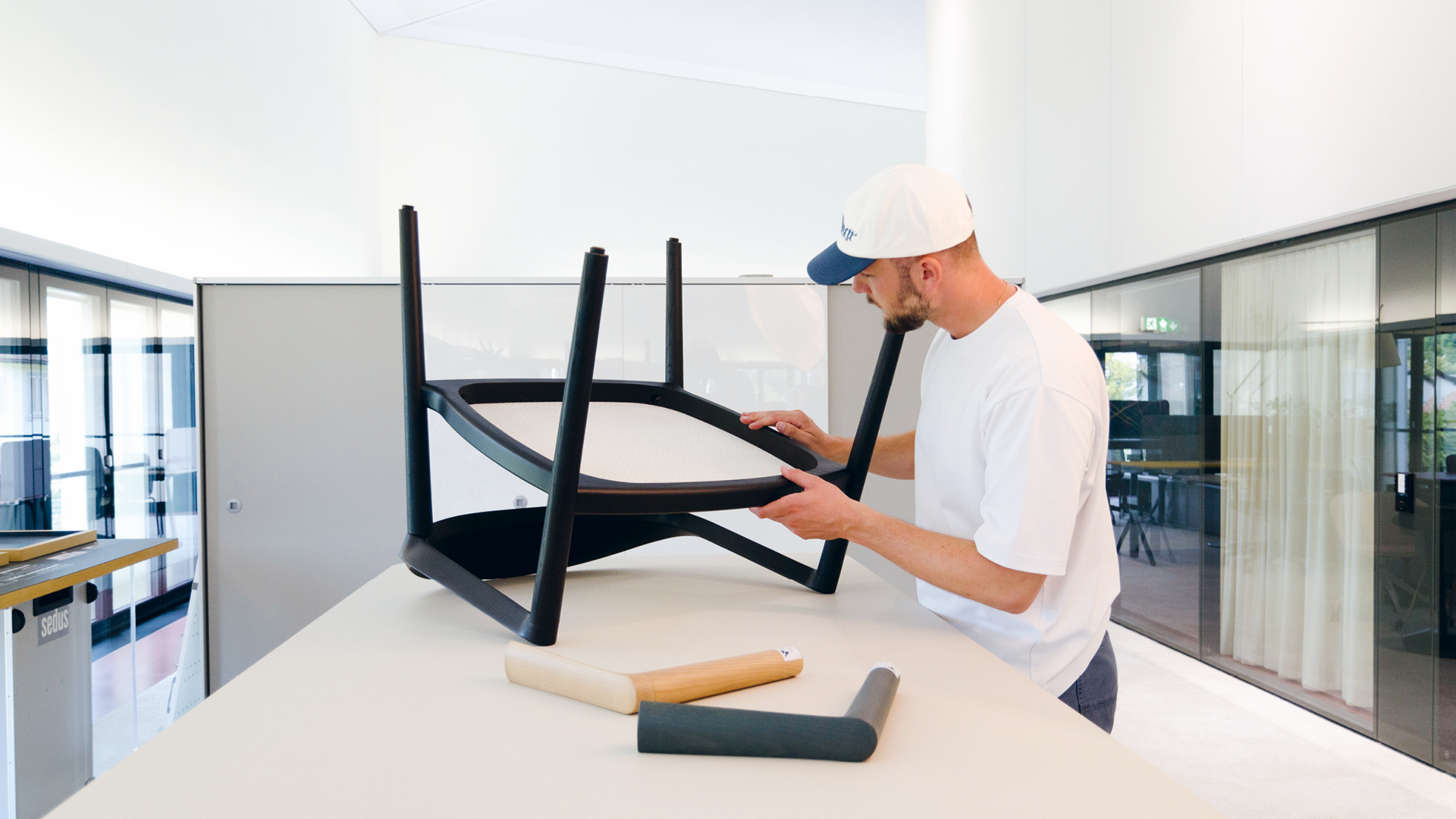In this interview, Konstantin Thomas explains how he successfully accomplished this.
Tell us briefly about your career. How did you get into product design, particularly in the field of office furniture?
Because of my passion for longboarding and downhill skating. While I was still at school, I started designing my own boards with a friend and pressing them with custom-made moulds. This was my first point of contact with product design. During my studies, I then discovered my passion for designing furniture and gradually moved further in the more specialised field of office furniture.
With the se:café wooden chair you designed, Sedus is returning to its roots, so to speak. To what extent has the history of Sedus influenced your approach to design?
I used the history of Sedus as a central source of inspiration when designing the wooden chair. Sedus stands for a long tradition of furniture design characterised by precision craftsmanship and a spirit of innovation. I therefore wanted to design this chair in such a way that it both remains true to Sedus’ classic values whilst adding a modern touch. The combination of traditional wood craftsmanship and contemporary design reflects the balance between historical heritage and contemporary demands. With its deliberate choice of clean lines and functional elegance, the chair pays homage to Sedus’ heritage while seamlessly fitting into the modern world.
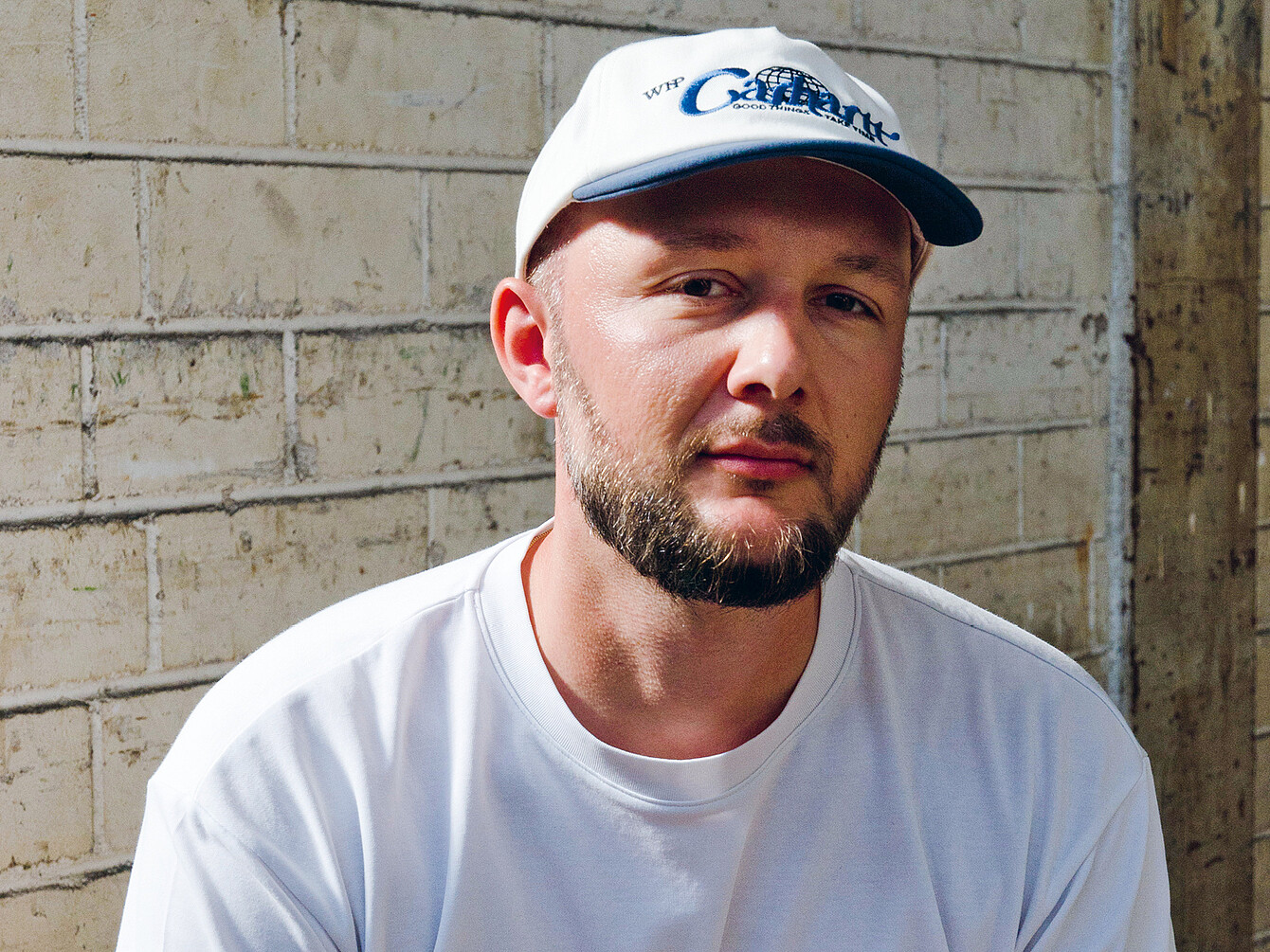
Honest materials, precise workmanship
Can you tell us something about the materials and the manufacturing process of the chair?
When choosing the materials for the wooden chair, my main focus was on authenticity and durability. I opted for solid beech and ash wood because they have a wonderful feel and can develop a beautiful patina over time. The manufacturing process is precise and combines traditional craftsmanship with modern technology. Each piece of wood is carefully selected and crafted to highlight the natural characteristics of the material. The visible joints emphasise the chair’s construction and there is no attempt to hide anything. The design is honest and direct, reflecting the authenticity of the materials used.
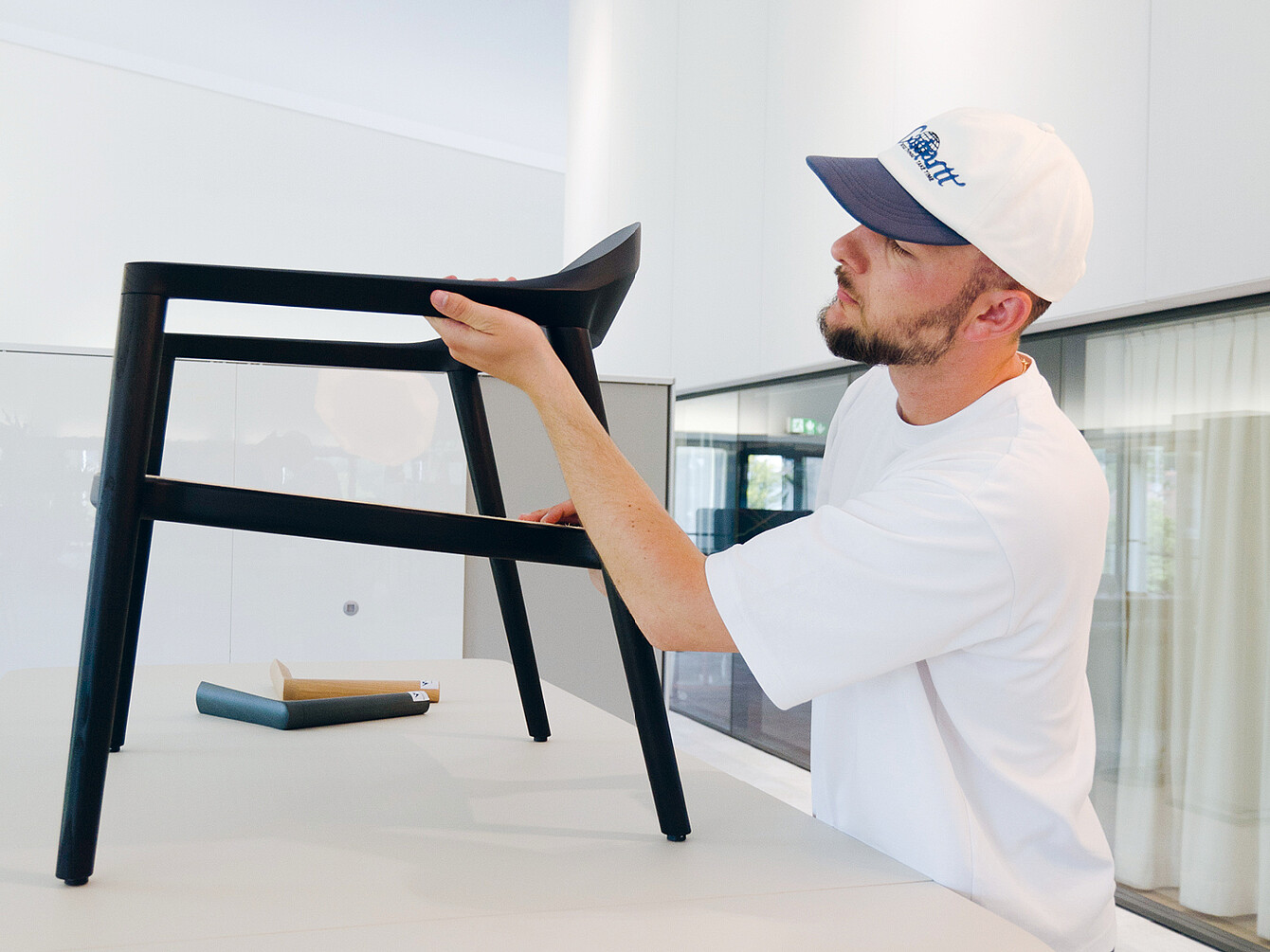
Keeping an eye on every detail: Konstantin carefully checks all the fitting points of the new se:café wooden chair before the prototype goes into production.
I wanted to create a chair that was both aesthetically pleasing and practical. This means that the shape directly supports the purpose of the chair while offering a minimalist but thoughtful design.
How did you integrate ergonomics and comfort into the design?
Ergonomics and comfort are achieved in the design process through an intensive examination of the material and its functional purpose. With the wooden chair, I tried to get to the heart of the matter: clear lines that support a natural sitting posture and precise transitions that intuitively guide the body. Comfort comes not only from additional upholstery, but also from the correct shape and well-thought-out geometry. Wood is a living material – its warmth and feel make a decisive contribution to cosiness. It is all about finding a balance between simplicity and functionality.

The se:café wooden chair consists of various components. Individual elements are milled.
The path to the perfect shape
What challenges did you face when designing the chair and how did you overcome them?
One of the biggest challenges in designing the chair was to find a balance between the complicated shape and the natural properties of wood. As a living material, wood responds to temperature and humidity. It therefore required precise manufacturing techniques to avoid deforming the material. The solution was to combine traditional craftsmanship with modern technologies to maintain the structural integrity and visual appeal of the chair.
To what extent does sustainability play a role in your design and choice of materials?
Sustainability is a central element of my design for the wooden chair. I chose FSC-certified wood to minimise the ecological footprint and optimise the use of resources. By carefully selecting durable materials and reducing the design to the essentials, I have ensured that the chair is not only aesthetically pleasing and functional, but is also built for longevity. The design is intentionally timeless allowing the chair to remain relevant both now and in the future, promoting a long service life.
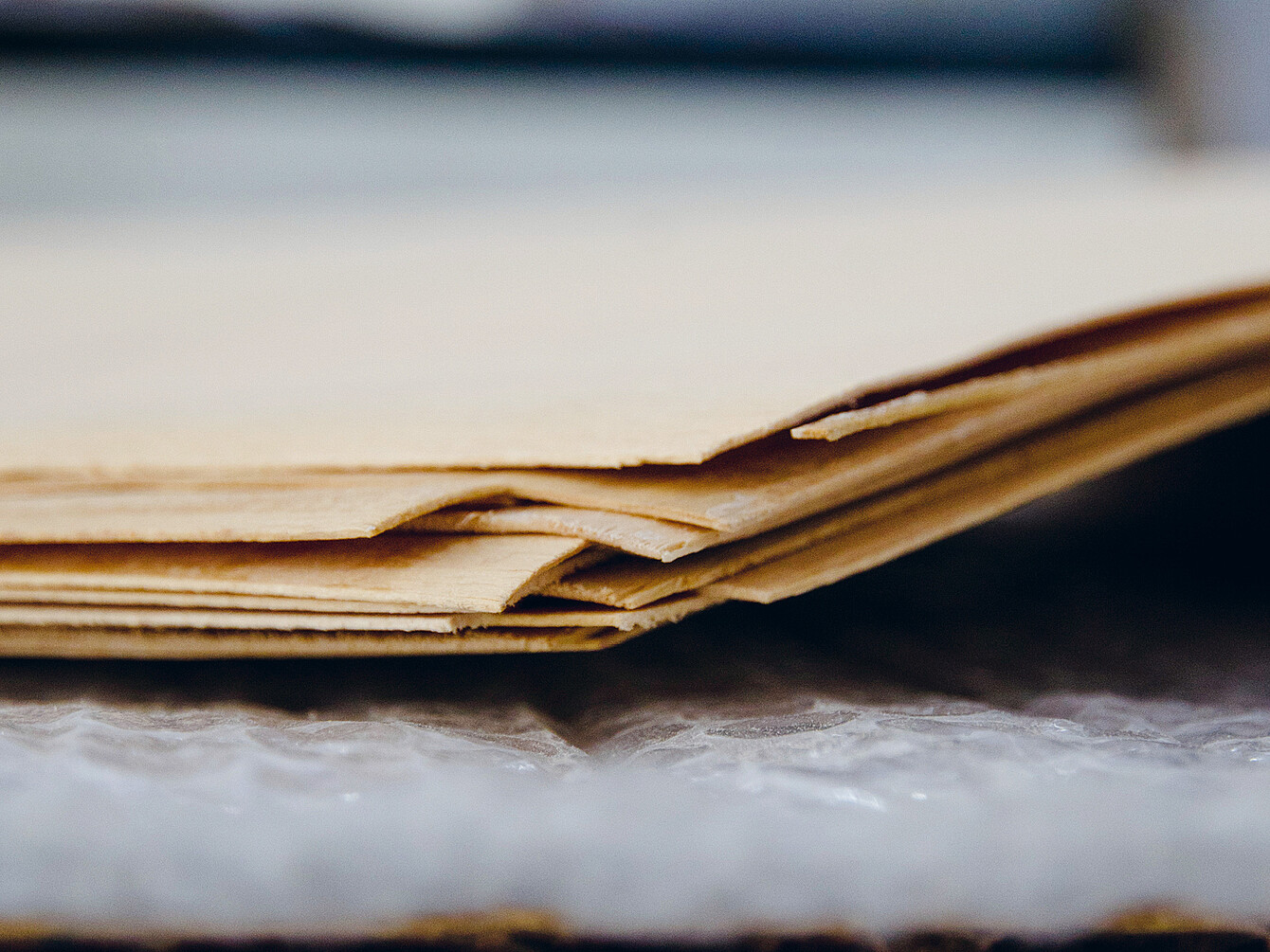
The seat of the chair is covered with a veneer. This gives the se:café wooden chair a particularly harmonious wooden look.
Design for collaboration – the chair in the Work Café
What role does the aesthetic design of the chair play in the overall concept of the “Work Café”?
The aesthetics of the chair are central to the overall concept of the “Work Café”. It is not just about creating a functional seat, but about creating an atmosphere that encourages creativity and dialogue. The chair is designed to blend seamlessly into the space, contributing to a harmonious environment whilst conveying a clear visual identity. Its design strikes a balance between calm and dynamism – essential qualities for a workspace and meeting area. Through its design language and materiality, the chair subtly yet decisively shapes the atmosphere of the room.
Are there any future plans or further developments you have in mind for this chair or similar projects?
Yes, I am working on integrating sustainable materials and modular components into our designs to reduce the environmental impact and increase their adaptability and longevity.
What is your personal favourite detail or element of this chair that makes you particularly proud?
My favourite detail on this chair is undoubtedly the transition of the back contour into the armrest. It is a very simple but precise transition that looks seamless while celebrating the craftsmanship behind the product. It makes me proud because it is both aesthetically pleasing and functional and subtly defines the chair’s unique character.
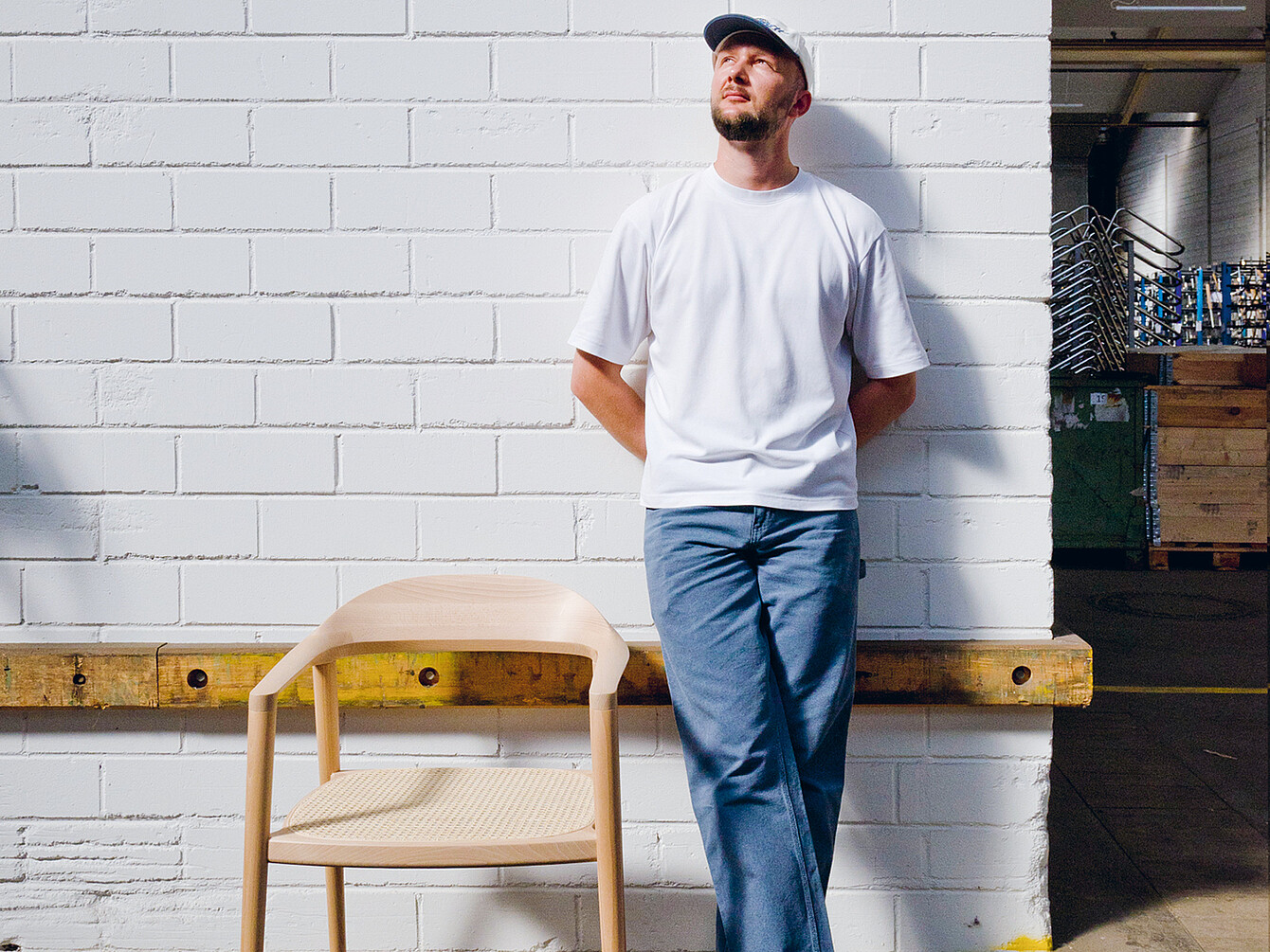
Conclusion: A chair that combines values and visions
The se:café wooden chair is more than just a piece of seating furniture – it is an expression of conscious design that harmoniously combines tradition, craftsmanship and modern requirements. With clean lines and honest materials, Konstantin Thomas has succeeded in designing a chair that is not only functional but also has a strong aesthetic presence. In the context of work cafés, it creates spaces that promote openness, exchange and well-being. The design stands for an attitude that focuses on durability, sustainability and precision – values that characterise both Sedus as a brand and contemporary working. The se:café wooden chair proves that good design is always a question of the conscious interplay of form, function and responsibility.
The interview with Konstantin Thomas was first published in the Sedus LOOKBOOK N° 02. You can receive the full issue of the magazine, by email, here.
social media channels:
